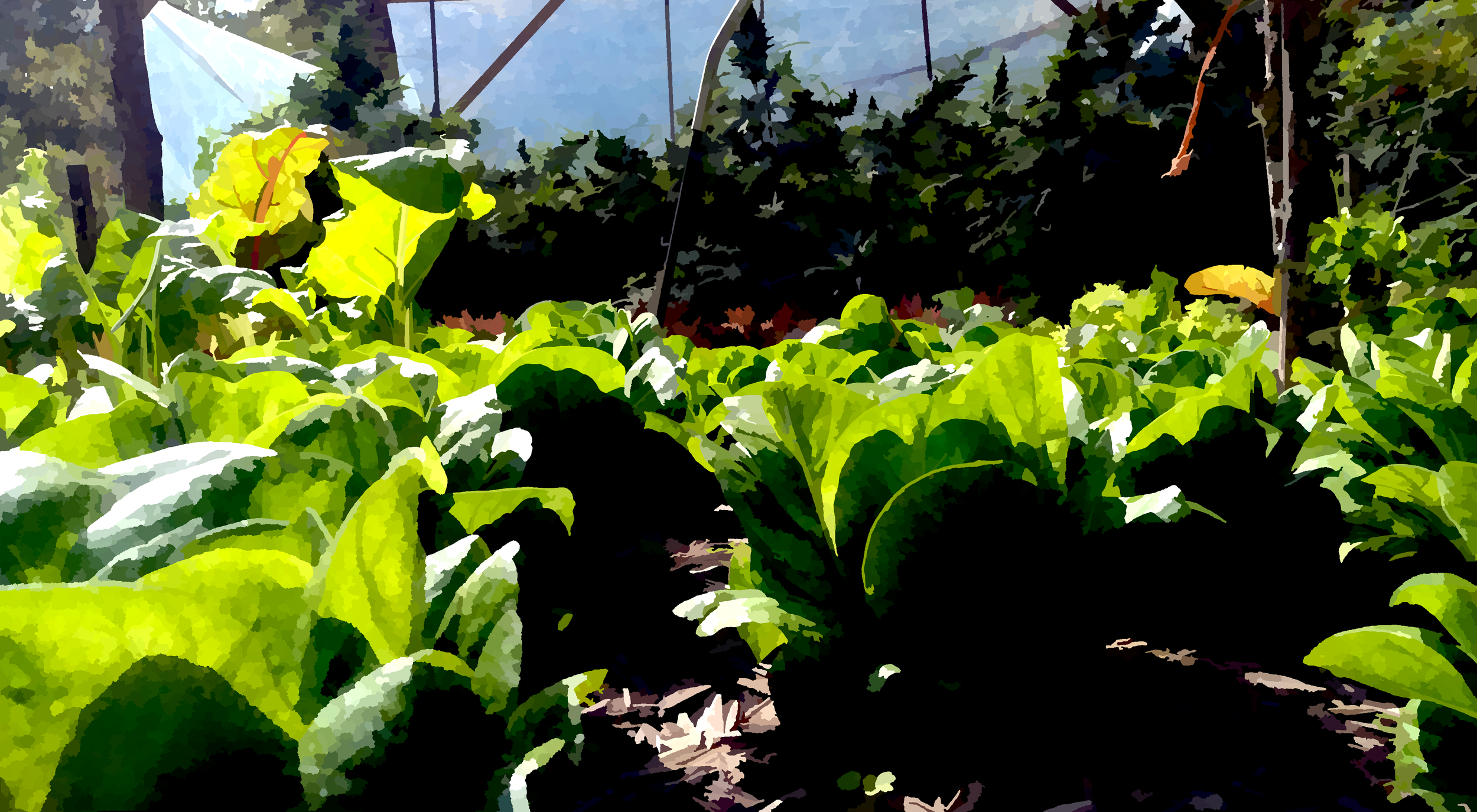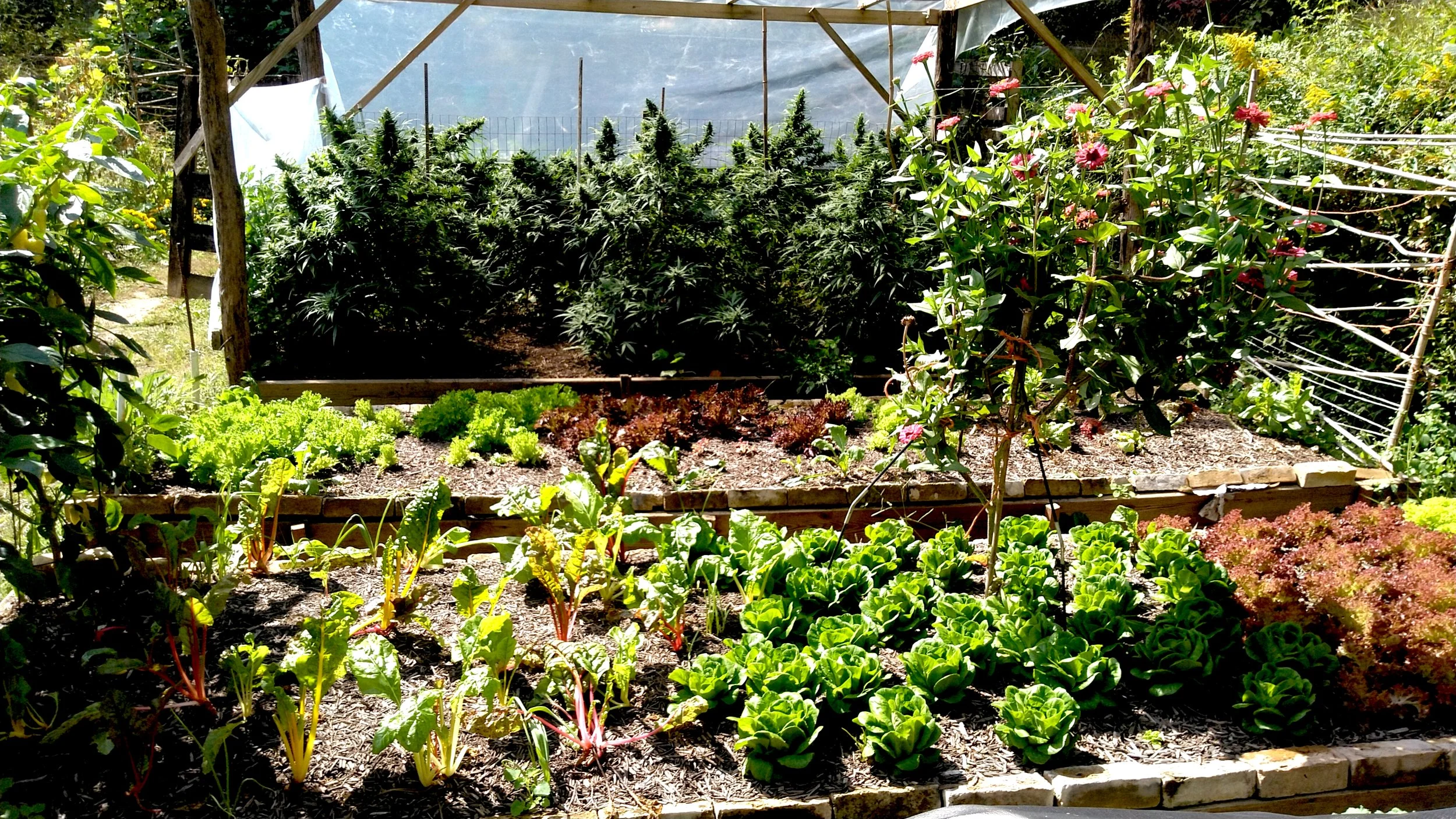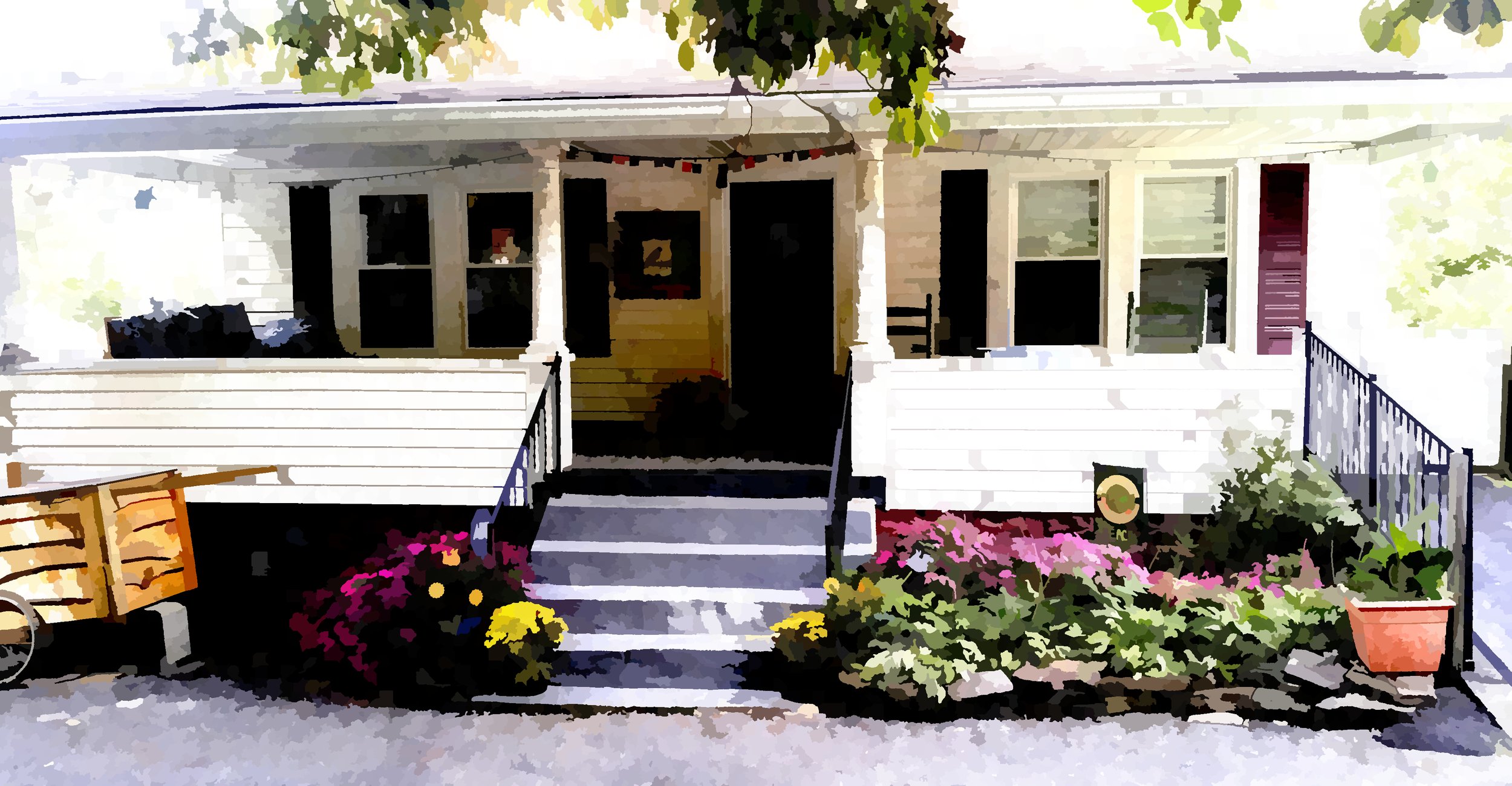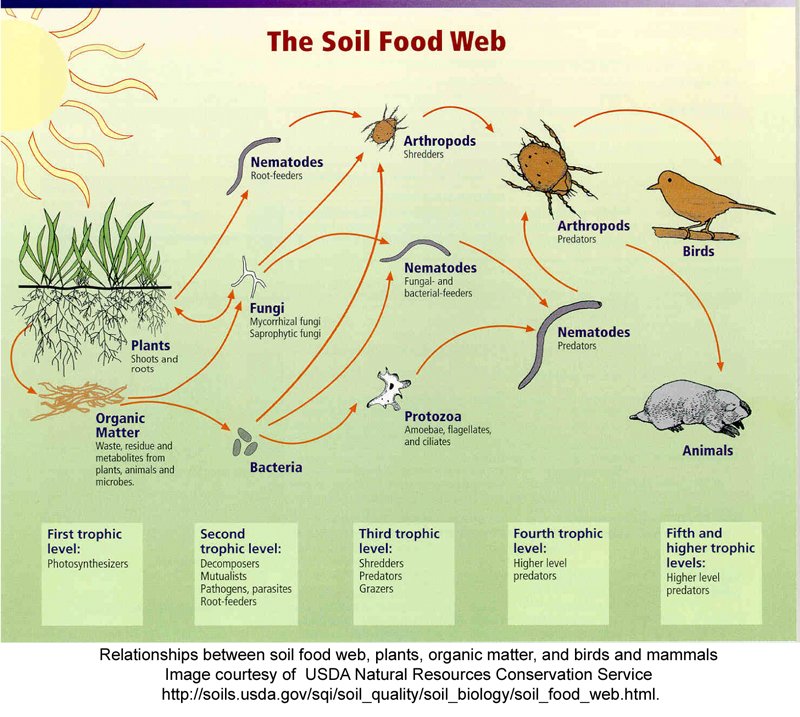
SEASONAL PRODUCE
Everything is Connected
SO HOW DO VEGETABLES “CONNECT” WITH HEMP?
Regenerative farming means we don’t use commercial fertilizers, pesticides, or fungicides in the production of our hemp or produce.
Everything our plants need is contained IN THE SOIL, right beneath our feet.
The answer is simple. It’s called the SOIL FOOD WEB.
The Soil Food Web refers to the symbiotic culture of bacteria and fungi that connects and nourishes all plant life. In undisturbed forests and native grass lands, this culture occurs naturally, producing rich fertile soils. It is this type of soil that we aim to cultivate at Hidden Hollow Hemp Farm.
As mature hemp plants only take up significant space for two months out of the year, we are left with plenty of time and room on our farm to grow vegetables and build our soil. You see, everything plants need is already in the soil; however, soils need help in converting nutrients to a usable form. That’s were vegetables come in and play their part in the cycle.
“Plants generate sugars through photosynthesis and deliver most of those sugars to their rhizosphere, that area of soil they affect through root secretions. Those plant sugars are a food source for soil fungi that, in turn, free up nutrients bound in minerals and organic materials and make them available to be taken up by the plant roots” (Soil3).
Simply put, we grow vegetables because we care about the quality of our soil and the quality of our hemp. And being able to provide nutrient-dense vegetables for our family and our community is a definite plus!

BENEFITS OF THE SOIL FOOD WEB
-
The soil food web is a complex ecosystem that helps promote healthy soil and optimise its fertility. By increasing the biodiversity of organisms living in the soil, the food web helps to naturally cycle nutrients and increase the availability of essential elements required by plants.
Plants, animals and microorganisms are all instruments in an orchestra; each plays a crucial part in the natural symphony of life. If even one of the players is out of tune, the whole soil food web suffers. However, when everything is in order, the results are beautiful.
-
The soil food web also works to suppress disease, as the microorganisms consume and inhibit disease pathogens. The microbes also work in tandem with healthy plant roots to build a protective wall to prevent disease pathogens from infiltrating the roots.
But wait – there’s more! Some microorganisms in the soil climb onto the foliage and fruit of plants. The surface organisms have their own jobs to do, and plants secrete exudates from their stems, foliage, flowers, fruit, and seed pods to attract and activate these creatures.
Insects transport microbes onto plants too. Honeybees, Mason bees and all the other creatures in the garden are unwittingly transporting fungi and bacteria (some good, some not so good) as they make contact with the soil and move from plant to plant.
Many of those surface microorganisms provide additional benefits to the garden – aiding in disease suppression – but also to the gardener. They play a vital role in our digestive health. In fact, most of the microbes in our guts (which help us digest food properly) come from the surface of the foods we eat.
-
Plants require more than just nitrogen, phosphorus and potassium for health and production. They also need calcium, boron, magnesium, and a wide host of other micronutrients. The many different microbial species extract different nutrients, however they remain sleeping or dormant until they are stimulated by the plant. The plant activates just the species it needs by secreting the specific exudates those species require.
Once the species of fungi and bacteria are activated, they perform their job – like mining zinc from a specific soil aggregate. The nutrients extracted by the enzymes will, ultimately, feed the plant.
-
The presence of beneficial fungi in the soil has been shown to significantly inhibit the growth of weeds. This is because beneficial fungi secrete acidic enzymes which lower soil pH. The reduced pH levels inhibit the ability of nitrifying bacteria to transform ammonia, one form of nitrogen, into nitrates, a second form of nitrogen that is vital for weeds to flourish.
-
Around plant roots, bacteria form a slimy layer. They produce waste products that glue soil particles and organic matter together in small, loose clumps called microaggregates. Threading between these aggregates and binding them together are fine, ribbon-like strands of fungal hyphae which further define and stabilize the soil into macroaggregates. It is this aggregated soil structure, which looks it a bit like spongy chocolate cake, that effectively resists compaction and erosion and promotes optimal plant and microbial growth.
-
Plants take in atmospheric carbon in the form of carbon dioxide and add carbon to the soil. In a healthy ecosystem, it’s used in the soil by fungus and bacteria where it can remain for hundreds of years!
One of the most interesting examples of cooperation in the soil is nitrogen-fixing bacteria, many of which live in little homes right on the roots of certain plants, mostly legumes like clover and peas. These bacteria take the nitrogen out of the air and change it into a form the plants can use.
Plants can’t do this, but they can get carbon out of the air — something the bacteria need. Thus begins the trading that allows all other life on earth to exist.
-
Animals have a big part to play in the garden. Their manure is organic matter and fertilizer for the soil, and it often contains seeds transported from somewhere else that will germinate and grow into plants.
Plants have been very clever to buddy up with animals for this purpose. Sure, they have to manufacture some fruit for this process to take place, but their species will live on, so it’s worth it.
Plants are pollinated by animals, especially birds, bees and butterflies.
The colony collapse disorder that is plaguing the bee world is a problem not only because we won’t have honey, but because we’re losing one of our main pollinators — and therefore our food.
Insects (such as mites) and microscopic animals (such as nematodes) are largely responsible for making minerals available to plants as a result of eating microbes. They also transport microbes around the soil just by moving around. Otherwise, many of the microbes wouldn’t get very far.
Just these animals being there, eating plants, walking around, howling at the moon — it’s all important for a healthy garden.

Hidden Hollow Hemp Farm is registered with Appalachian Grown™ , the Appalachian Sustainable Agriculture Project (ASAP) certification program for food and agricultural products grown or raised on farms in Western North Carolina and the Southern Appalachian Mountains. The Appalachian Grown logo identifies local food and farm products to help consumers make informed buying choices. The program is open to farms, tailgate markets, and partner businesses such as groceries, restaurants, wholesalers, and artisan food producers.
Visit our Facebook page for updated information on available produce.
or VISIT OUR STORE




